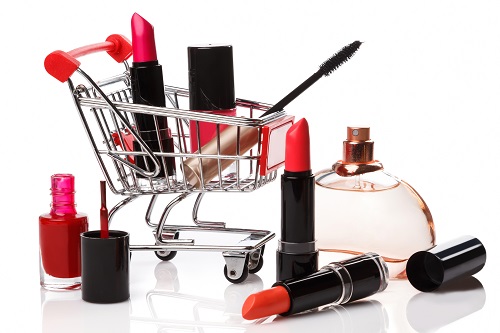Counterfeit Make-Up: Is Beauty Worth the Price You May Ultimately Pay?
In February 2017, David Gauvey Herbert wrote for Bloomberg Businessweek about the rise in counterfeits in the cosmetic industry.
Global seizures of counterfeit perfume and cosmetics jumped 25 percent from 2011 to 2013, according to a recent report by the Organization for Economic Cooperation and Development, making them a growing sector of the $461 billion annual trade in pirated and counterfeit goods. In 2015 the Department of Homeland Security began Operation Plastic Beauty after helping to bust a scheme on Long Island, N.Y., to make ersatz Vaseline, ChapStick, and other personal-care products, then sell them in Chinese-made counterfeit packaging.
Like pharmaceuticals and food products, the health risks with cosmetics are nasty. The products often come from moonshine-style operations, with mud-caked floors and open vats of dye, and can contain paint thinner, mercury, carcinogens, and dangerous levels of bacteria. Eye shadow made with arsenic can seal your eyelids shut. The gels and powders of makeup itself are not difficult to fabricate, Estée Lauder says. And to criminals, the price-to-size ratio of cosmetics is more appealing than for bulky items such as Blu-ray players: The contents of a USD$21 vial of MAC-brand Liquidlast Liner measure only 0.084 ounce. Getting thousands of such items to the U.S. doesn’t require an entire shipping container. Counterfeiters increasingly spurn freight in favor of FedEx, DHL, and other international couriers, preferring to spread a container-load of products across 100 large boxes.
Despite the obvious health risks, counterfeit makeup appears to be selling in higher and higher volume. Last year governments made more than 1,500 seizures of fake Estée Lauder products, totaling more than 2.8 million items, most of them MAC makeup. Given standard customs interdiction rates, the trade could easily amount to more than 10 times that figure. In addition to the risk to personal health is the reputational damage that counterfeits do to a brand. And the reputational damage to Estée’s 29 brands—which had revenue of $11.2 billion in the year ended August 2016—concerns the company even more than lost sales. For anyone who works in the field of brand protection, the damage and lost of value to a company’s brand integrity far outweighs any concerns for lost sales.
The Internet is a perfect marketplace for cosmetics. The consumers know the brands and have their favorite colors, lotions, crèmes and gels. Most of the most popular brands also command higher prices. A typical MAC lipstick can cost between USD $15-20, Chanel and Estee Lauder brands can each run more than USD $30. Cosmetics are consumed regularly and need to be replenished. If the consumer can save money by buying on-line, then why not? The counterfeiter knows this and uses this need and attraction to their advantage.
Over the past decade, the market has atomized—in large part because of the rise of sourcing websites such as Alibaba. It’s also possible to buy counterfeit goods in bulk—including makeup. A recent search on Alibaba found more than 22,000 listings for lipstick, including many sellers openly hawking MAC knockoffs. Anyone with a few thousand dollars can buy counterfeit wholesale online and resell items individually on eBay and Amazon.com, or through more traditional channels such as flea markets, beauty salons, and mall kiosks.
Unlike buyers of high priced luxury items, like watches, who generally know they’re not getting a real Rolex for USD$50, the vast majority of people who purchase counterfeit makeup think they’re getting the real thing. Prices tend to be close to the genuine retail value. Shoppers often think they’ve found authentic goods from a close-out sale or from a company insider who’s reselling items purchased with an employee discount.
